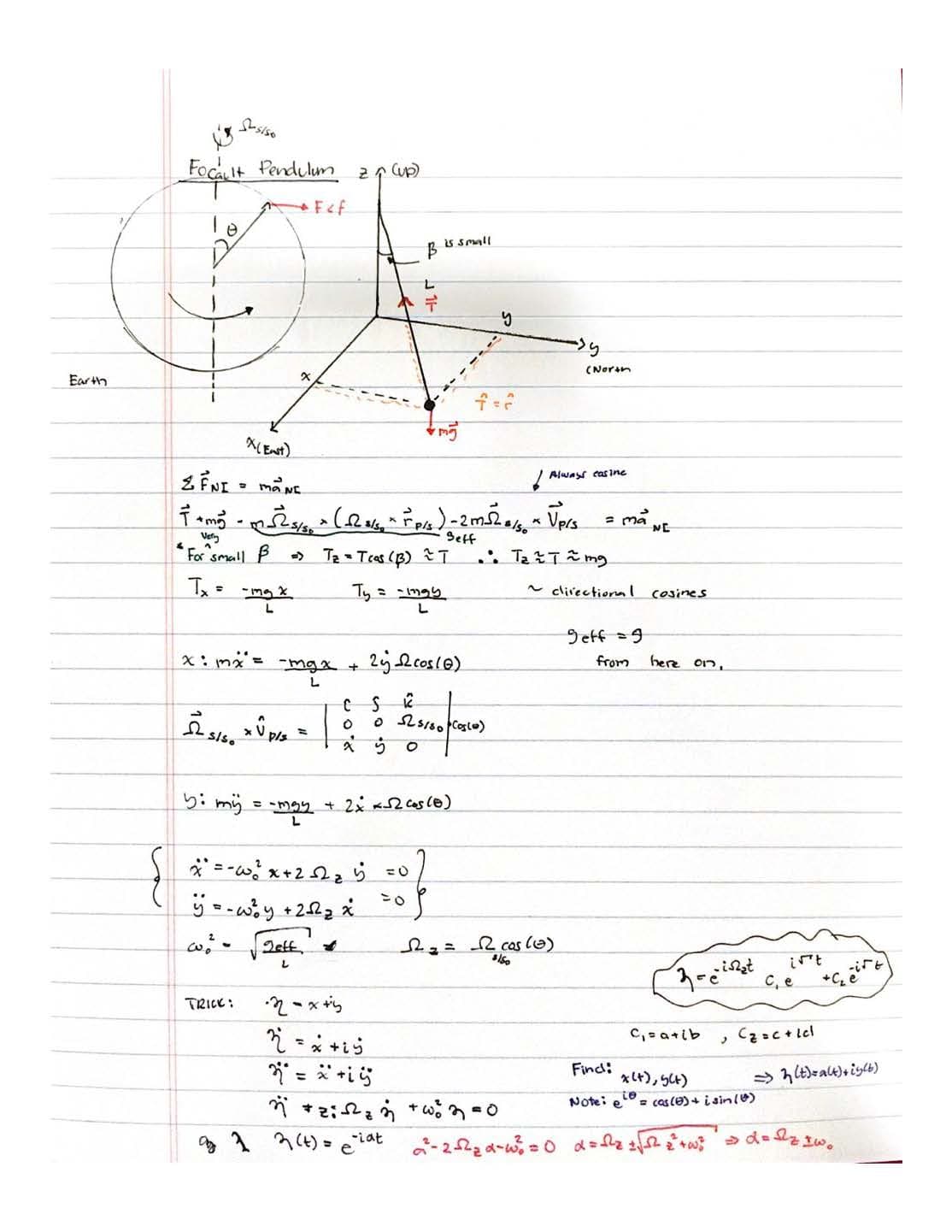We have discussed in the session that the solution of the Foucault pendulum can be obtained using a complex substitution 7(t) = x(t)+ iy(t). The solution was 2. 2 n(t) = = e-in,t Ce + Cze where C, and Cz are complex constants. Using the initial conditions x, = A, yo = 0, vxo = 0, and vyo = 0, determine the real functions x (t) and y(t) and describe the pendulum's behavior be referencing the solutions(explain which part of the function is responsible for what). Recall that e16 = cos e + i sin 0.
We have discussed in the session that the solution of the Foucault pendulum can be obtained using a complex substitution 7(t) = x(t)+ iy(t). The solution was 2. 2 n(t) = = e-in,t Ce + Cze where C, and Cz are complex constants. Using the initial conditions x, = A, yo = 0, vxo = 0, and vyo = 0, determine the real functions x (t) and y(t) and describe the pendulum's behavior be referencing the solutions(explain which part of the function is responsible for what). Recall that e16 = cos e + i sin 0.
Related questions
Question
I have attached my work on the Focault Pendulum and I used Netwon's Notation for my derivatives.

Transcribed Image Text:We have discussed in the session that the solution of the Foucault pendulum can be
obtained using a complex substitution 7(t) = x(t)+ iy(t). The solution was
2.
2
n(t) =
= e-in,t
Ce
+ Cze
where C, and Cz are complex constants. Using the initial conditions x, = A, yo = 0, vxo = 0,
and vyo = 0, determine the real functions x (t) and y(t) and describe the pendulum's
behavior be referencing the solutions(explain which part of the function is responsible for
what). Recall that e16
= cos e + i sin 0.

Expert Solution
This question has been solved!
Explore an expertly crafted, step-by-step solution for a thorough understanding of key concepts.
Step by step
Solved in 2 steps with 2 images
